Removing Punctuation From String Python
Punctuation plays a crucial role in conveying meaning and clarity in written language. However, there are instances when we may need to remove punctuation from a string in order to perform certain data processing or analysis tasks. In this article, we will explore various approaches to remove punctuation from a string using Python. We will discuss the prerequisites, methods, and applications of removing punctuation, and provide code examples for each method.
Prerequisites for Removing Punctuation from a String
Before diving into the methods of removing punctuation, let’s first understand the prerequisites for this task. In order to remove punctuation from a string, you should have a basic understanding of the Python programming language. Familiarity with string manipulation and regular expressions would also be beneficial.
Importing Libraries for Punctuation Removal
To begin, let’s import the necessary libraries for punctuation removal. In Python, we commonly use the `re` and `string` modules for this purpose. The `re` module provides regular expression matching operations, while the `string` module offers sets of commonly used string operations.
“`python
import re
import string
“`
Possible Approaches to Remove Punctuation from a String
There are several approaches to remove punctuation from a string in Python. We will explore the following methods:
1. Using Regular Expressions to Remove Punctuation
2. Using the `string.punctuation` Module to Remove Punctuation
3. Creating a Custom Function to Remove Punctuation
4. Removing Punctuation Using the `translate()` Method
Using Regular Expressions to Remove Punctuation
Regular expressions provide a powerful way to search, replace, and manipulate strings. Let’s use the `re` module to remove punctuation from a string:
“`python
def remove_punctuation_regex(input_string):
return re.sub(r'[^\w\s]’, ”, input_string)
text = “Hello, World! How are you?”
clean_text = remove_punctuation_regex(text)
print(clean_text)
“`
Output: `Hello World How are you`
This method uses the `re.sub()` function to substitute all non-word and non-space characters with an empty string.
Using the `string.punctuation` Module to Remove Punctuation
Python’s `string` module provides a string called `punctuation` which contains all punctuation characters. We can utilize this module to remove punctuation from a string:
“`python
def remove_punctuation_string(input_string):
return input_string.translate(str.maketrans(”, ”, string.punctuation))
text = “Hello, World! How are you?”
clean_text = remove_punctuation_string(text)
print(clean_text)
“`
Output: `Hello World How are you`
Here, the `translate()` method is used along with `maketrans()` to create a translation table that maps all punctuation characters to None.
Creating a Custom Function to Remove Punctuation
If you have specific punctuation characters you want to remove, you can create a custom function. Let’s see an example:
“`python
def remove_punctuation_custom(input_string, punctuations):
for punctuation in punctuations:
input_string = input_string.replace(punctuation, ”)
return input_string
text = “Hello, World! How are you?”
clean_text = remove_punctuation_custom(text, [‘,’, ‘!’, ‘?’])
print(clean_text)
“`
Output: `Hello World How are you`
In this method, we define a custom function that takes two arguments: `input_string` and a list of `punctuations` to remove. We iterate over the `punctuations` and use the `replace()` function to remove each punctuation character from the input string.
Removing Punctuation Using the `translate()` Method
The `translate()` method can also be used to remove punctuation efficiently:
“`python
def remove_punctuation_translate(input_string):
translation_table = str.maketrans(”, ”, string.punctuation)
return input_string.translate(translation_table)
text = “Hello, World! How are you?”
clean_text = remove_punctuation_translate(text)
print(clean_text)
“`
Output: `Hello World How are you`
In this method, we create a translation table using `maketrans()` and then pass it to the `translate()` method to remove the punctuation characters.
Applying Punctuation Removal to Textual Data
Now that we have covered various methods to remove punctuation from a string in Python, let’s explore some common use cases where this operation is beneficial.
1. Remove punctuation Python: This keyword refers to the general process of removing punctuation from a string using any of the methods discussed above.
2. Remove punctuation python nltk: The Natural Language Toolkit (NLTK) is a popular Python library for natural language processing. To remove punctuation using NLTK, you can tokenize your text into words and then filter out any tokens that consist solely of punctuation characters.
3. Remove punc python: This is a shorthand way of expressing the removal of punctuation characters from a Python string.
4. Remove punctuation from string JavaScript: Although this article focuses on Python, the concept of removing punctuation from a string is applicable to other programming languages such as JavaScript. Similar methods and approaches can be used, although the syntax may differ.
5. Remove symbol from string Python: Symbols are a subset of punctuation characters. To remove symbols specifically from a Python string, you can modify the methods described above to exclude symbols from the translation table or from the list of punctuations.
6. Remove special characters from string Python: Special characters, including punctuation, can be removed using the techniques provided in this article.
7. Split punctuation Python: Splitting a string based on punctuation characters can be achieved by using the `split()` function along with a regex pattern that matches all punctuation characters.
8. Remove empty strings from a list of strings: Sometimes, after removing punctuation or performing other string operations, we end up with empty strings in a list. To remove such empty strings, you can use a list comprehension or the `filter()` function along with the `None` keyword.
Removing punctuation from a string in Python is a crucial step in various data processing and analysis tasks. By utilizing the methods provided in this article, you can remove punctuation efficiently, thereby enhancing the effectiveness of your code and ensuring accurate results.
Python Regex: How To Remove Punctuation
How To Remove Punctuation From String In Python Using Function?
When it comes to string manipulation in Python, there might be occasions where you need to remove punctuation from a string. This process can be simplified by utilizing a function specifically designed for this purpose. In this article, we will delve into the details of how to achieve this, exploring different methods and highlighting some crucial considerations.
To begin, let’s first understand what punctuation in Python refers to. Punctuation marks are symbols that are neither letters nor numbers. These include characters such as periods, commas, question marks, exclamation marks, and even spaces. While punctuation marks serve different purposes in language, there are scenarios where removing them can be advantageous, for instance, when performing text analysis or natural language processing (NLP) tasks.
Method 1: Utilizing string.punctuation and translate()
Python’s built-in string module provides a variable called “punctuation,” which contains a string of all common punctuation marks. By using the “translate()” method, we can remove these punctuation marks from a given string.
Here’s an example of a function that removes punctuation marks from a string:
“`python
import string
def remove_punctuation(text):
translator = str.maketrans(”, ”, string.punctuation)
return text.translate(translator)
“`
In this function, the “str.maketrans()” method creates a translation table that maps each punctuation mark to None. The “translate()” function then applies this translation table to the input string, removing all punctuation marks.
Method 2: Using regular expressions (regex)
Regular expressions can also be employed to remove punctuation from a string in Python. Regular expressions provide a flexible and powerful way to match and manipulate patterns in strings.
Let’s see how we can achieve this using the “re” module:
“`python
import re
def remove_punctuation(text):
return re.sub(r'[^\w\s]’, ”, text)
“`
In this function, the “re.sub()” method substitutes all non-word and non-space characters with an empty string, effectively removing punctuation from the input text.
FAQs:
Q1: Can the functions handle non-English characters or special symbols?
Yes, both methods can handle non-English characters and special symbols. The “string.punctuation” variable contains common punctuation marks, which includes symbols used in various languages. Additionally, the regular expression approach can be adapted to handle specific cases by modifying the regular expression pattern.
Q2: Is there any difference in terms of performance between these two methods?
In general, the performance difference between these methods is negligible for most applications. However, when dealing with large texts or processing a significant number of strings, the regular expression approach might be slightly slower due to the additional processing overhead.
Q3: Can either of these methods handle punctuation removal with preserving spaces?
Yes, both methods can preserve spaces within the string. The translation table approach eliminates punctuation marks while preserving spaces, whereas the regular expression method explicitly matches non-space characters, excluding them from the final output.
Q4: What happens if the input string is empty?
If the input string is empty, both functions will return an empty string as there would be no punctuation marks to remove.
Q5: Are there any considerations when using these functions in non-English text analysis?
Yes, when working with non-English text analysis, you should take into account the specific punctuation marks used in the target language. While the “string.punctuation” variable covers many commonly used punctuation marks, it may not include all symbols used in other languages. It would be beneficial to inspect the contents of the “string.punctuation” variable and modify it accordingly.
In conclusion, removing punctuation from a string in Python can be accomplished using either the translation table or the regular expression method. Both methods offer an effective way to eliminate punctuation marks from a string, catering to different preferences and scenarios. By utilizing these functions, you can streamline your string manipulation tasks, particularly when text analysis or NLP operations are involved.
How To Remove Punctuation From A String Python Using For Loop?
Punctuation refers to a set of characters in any language that is used to enhance the meaning and clarity of written text. However, there are instances when we need to remove these punctuation marks from strings when performing certain tasks like text analysis, natural language processing, or data preprocessing. Python, being a versatile programming language, provides several ways to remove punctuation from a string. In this article, we will focus on one of the common methods: using a for loop.
The for loop is a fundamental construct in Python that allows us to iterate over items in a sequence, such as strings. We can use this loop to iterate over each character in a string and check if it is a punctuation mark. If it is, we can exclude it from the new string that we will be creating.
Here’s an example implementation of removing punctuation from a string using a for loop in Python:
“`python
def remove_punctuation(string):
punctuations = ”’!()-[]{};:'”\,<>./?@#$%^&*_~”’
new_string = “”
for char in string:
if char not in punctuations:
new_string += char
return new_string
“`
In this code snippet, we define a function called `remove_punctuation` that takes a string as an input parameter. We then create a string variable `punctuations` which contains all the punctuation marks that we want to remove. Next, we initialize an empty string `new_string` which will store the final string without any punctuation.
The for loop is used to iterate over each character in the input string. We check if the current character `char` is not present in the `punctuations` string. If it is not, we concatenate it with the `new_string` variable. In the end, we return the `new_string` without any punctuation marks.
By using this approach, we can easily remove punctuation marks from any given string in Python. Let’s take a closer look at how it works:
Example:
“`python
input_string = “Hello, world! How are you?”
print(remove_punctuation(input_string))
“`
Output:
“`
Hello world How are you
“`
As we can see, the output string no longer contains any punctuation marks. The for loop iterated over each character in the input string and excluded the punctuation marks before concatenating the characters into the `new_string`.
FAQs:
Q: Can I modify the list of punctuation marks in the code?
A: Absolutely! The punctuations string can be customized based on your requirements. You can add or remove any punctuation mark you want to include or exclude from the string.
Q: Are all punctuation marks included in the punctuations string?
A: No, the punctuations string contains a general set of common punctuation marks. However, if you have specific punctuation marks in mind that are not included, you can modify the string accordingly.
Q: Will this method remove punctuation marks from non-English text as well?
A: Yes, this method will remove punctuation marks from any language as long as the text is encoded in Unicode. Python treats strings as a sequence of Unicode characters, making it suitable for handling multilingual text.
Q: Is there any other way to remove punctuation marks in Python?
A: Yes, Python provides several libraries such as string.punctuation and regular expressions that can help remove punctuation marks. However, using a for loop is a simple and efficient approach for smaller tasks.
Q: Can this method be used with large strings or files?
A: While this method will work for strings of any size, it may not be the most efficient approach for larger strings or files. In such cases, it is recommended to consider alternative methods or libraries that are optimized for performance.
In conclusion, removing punctuation marks from a string in Python using a for loop is a straightforward method that allows us to exclude specific characters from a string. By iterating over each character and excluding the punctuation marks, we can obtain a string without any punctuation. Feel free to customize the punctuations string according to your requirements.
Keywords searched by users: removing punctuation from string python Remove punctuation Python, Remove punctuation python nltk, Remove punc python, Remove punctuation from string JavaScript, Remove symbol from string Python, Remove special characters from string Python, Split punctuation Python, 3. remove empty strings from a list of strings
Categories: Top 99 Removing Punctuation From String Python
See more here: nhanvietluanvan.com
Remove Punctuation Python
Punctuation removal is a crucial task in text processing and analysis. Whether you’re a data scientist, a programmer, or simply someone working with textual data, cleaning out punctuation from the text can greatly enhance readability and simplify subsequent analysis. Python, as a versatile language, provides several methods and libraries to accomplish this task effortlessly. In this article, we will delve into various techniques and tools to remove punctuation in Python.
Understanding the Importance of Removing Punctuation
Punctuation marks such as periods, commas, exclamation marks, question marks, and quotation marks play a vital role in conveying context and meaning in written communication. However, in the context of text analysis, these symbols can often hinder the efficiency of our algorithms and models. Removing punctuation not only simplifies the text but also ensures consistency in subsequent analysis, such as word frequency calculation or sentiment analysis.
String Manipulation Techniques
Python provides numerous built-in string methods that can be utilized to remove punctuation marks from a given text. One common approach is to iteratively check each character in the string and exclude any that are classified as punctuation. The `string` module in Python consists of a constant string, `string.punctuation`, which holds all punctuation marks. Here’s an example implementation:
“`python
import string
text = “Hello, world!”
clean_text = ”.join(ch for ch in text if ch not in string.punctuation)
print(clean_text)
“`
In this example, the `join` function concatenates all non-punctuation characters to form a clean text string. Running the code will produce the output: “Hello world”. This simple yet effective technique can be applied to various scenarios when dealing with punctuation removal in Python.
Regular Expressions for Advanced Punctuation Removal
While the string manipulation technique is effective for removing basic punctuation, often, textual data consists of more complex patterns that require a more flexible and powerful approach. This is where regular expressions come into play. Python’s `re` module is widely used for pattern matching and text manipulation, including punctuation removal.
The regular expression pattern `r'[\W_]’` can be used to match any non-alphanumeric character, effectively targeting all symbols and punctuation marks. Consider the following example:
“`python
import re
text = “Why? Because it’s awesome!”
clean_text = re.sub(r'[\W_]’, ‘ ‘, text)
print(clean_text)
“`
In this example, `re.sub` replaces all non-alphanumeric characters with a single space. Thus, running the code will return: “Why Because it s awesome “. You can further modify this pattern to match specific punctuation marks or customize the replacement character according to your requirements.
Third-Party Libraries for Advanced Text Processing
Python’s rich ecosystem includes several powerful libraries specifically designed for text analysis and natural language processing. Two widely used libraries are NLTK (Natural Language Toolkit) and SpaCy. Both libraries provide robust methods for punctuation removal, leveraging advanced language processing techniques.
NLTK offers the `word_tokenize` function, which splits a given text into individual words, removing punctuation in the process. Consider the following example:
“`python
from nltk.tokenize import word_tokenize
text = “I can’t wait to visit New York!”
tokens = word_tokenize(text)
clean_text = ‘ ‘.join(tokens)
print(clean_text)
“`
In this example, the `word_tokenize` function tokenizes the text, removing punctuation as a byproduct. The result is a list of words that can be easily rejoined with a space delimiter, producing the clean text: “I can’t wait to visit New York!”.
SpaCy, on the other hand, is a powerful library that provides comprehensive text processing capabilities, including tokenization, lemmatization, and named entity recognition. To remove punctuation using SpaCy, one needs to install the library and load the English language model as follows:
“`python
import spacy
nlp = spacy.load(“en_core_web_sm”)
doc = nlp(“I like to code with Python!”)
clean_text = ‘ ‘.join([token.text for token in doc if not token.is_punct])
print(clean_text)
“`
In this example, `token.is_punct` filters out all the tokens classified as punctuation, resulting in the clean text: “I like to code with Python”. SpaCy’s extensive functionalities make it an ideal choice for advanced text analysis tasks.
FAQs
Q: What is punctuation?
A: Punctuation consists of various symbols such as periods, commas, question marks, exclamation marks, and quotation marks, used to enhance readability and convey meaning in written communication.
Q: Can I remove specific punctuation marks?
A: Yes, you can modify the patterns used in regular expressions or utilize specific methods of third-party libraries to target and remove specific punctuation marks.
Q: Is punctuation removal always necessary in text analysis?
A: While it depends on the analysis objectives, punctuation removal often simplifies subsequent tasks and enhances the accuracy and efficiency of algorithms and models.
Q: Are there any downsides to removing punctuation?
A: In some cases, punctuation can convey important context and meaning. Therefore, it is crucial to carefully consider the impact of removing certain punctuation marks in specific text analysis tasks.
Q: What should I do with contracted words like “can’t” or “it’s”?
A: Different techniques and tools handle contracted words differently. String manipulation methods usually treat contracted words as separate tokens, while libraries like NLTK and SpaCy often retain the contracted form for further analysis.
Q: Should I normalize the text before or after removing punctuation?
A: It is generally recommended to remove punctuation before performing any normalization tasks like case folding or stemming to ensure consistency and accuracy throughout the analysis.
In conclusion, punctuation removal is an essential step in text processing and analysis. Python offers a variety of techniques and libraries to conveniently remove punctuation marks from textual data. From simple string manipulation to advanced regular expressions and powerful third-party libraries like NLTK and SpaCy, Python provides a comprehensive toolkit for tackling this task effectively. By removing punctuation, you can achieve cleaner and more consistent text, simplifying subsequent analysis and enhancing the accuracy of your algorithms and models.
Remove Punctuation Python Nltk
Punctuation marks play a crucial role in conveying meaning and enhancing readability in written language. However, in certain applications such as text analysis, sentiment analysis, topic modeling, and natural language processing, removing punctuation can be beneficial. In this article, we will explore how to remove punctuation using Python’s Natural Language Toolkit (NLTK), a popular library for text processing and analysis.
1. Introduction to NLTK:
Python’s NLTK library provides a wide range of tools and functions for text preprocessing, tokenization, stemming, tagging, and more. It is widely used in the field of natural language processing and offers powerful features to simplify complex text analysis tasks.
2. Removing Punctuation using NLTK:
To remove punctuation from a given text using NLTK, we can follow these steps:
Step 1: Install NLTK
Before diving into the process, we need to ensure that NLTK is installed on our system. We can easily install it using the following command:
“`
pip install nltk
“`
Step 2: Import the necessary libraries
Next, we need to import the NLTK library and the `punkt` module, which provides the tokenizer we will use to separate the text into sentences or words. We can achieve this by adding the following lines of code:
“`python
import nltk
from nltk.tokenize import word_tokenize
nltk.download(‘punkt’)
“`
Step 3: Define the function to remove punctuation
Now, let’s define a function that takes a text as input and removes all the punctuation marks. We can implement the function as follows:
“`python
def remove_punctuation(text):
tokens = word_tokenize(text)
words = [word for word in tokens if word.isalnum()]
return ‘ ‘.join(words)
“`
Step 4: Test the function
To ensure that our function works as expected, let’s test it by passing a sample text as input:
“`python
text = “Hello! How are you? I’m doing well.”
print(remove_punctuation(text))
“`
Output:
“`
Hello How are you I’m doing well
“`
3. Handling Contractions:
The above approach removes punctuation marks entirely, including apostrophes used in contractions like “don’t” or “can’t.” However, in some cases, it may be desirable to retain apostrophes to preserve the meaning of contractions. We can modify our function to handle contractions by adding a few lines of code:
“`python
import string
def remove_punctuation(text, handle_contractions=False):
tokens = word_tokenize(text)
words = []
for word in tokens:
if word.isalnum():
words.append(word)
elif handle_contractions and word[0] in string.punctuation and word[-1] in string.punctuation:
words.append(word)
return ‘ ‘.join(words)
“`
4. Frequently Asked Questions (FAQs):
Q1: Can I remove punctuation from multiple sentences or a paragraph using NLTK?
Yes, NLTK’s `word_tokenize` function tokenizes the text into words even if it contains multiple sentences or a paragraph. The `remove_punctuation` function can handle any size of text input.
Q2: How do I remove punctuation from a file using NLTK?
To remove punctuation from a file, you can read the content of the file and apply the `remove_punctuation` function to the obtained text.
Q3: Can NLTK remove specific punctuation marks instead of removing all of them?
Yes, you can modify the `remove_punctuation` function to remove specific punctuation marks by adding an additional condition.
Q4: Are there any alternative methods to remove punctuation in Python?
Yes, Python provides other methods to remove punctuation from text, such as using regular expressions (`re` module), string translation tables (`str.translate()`), or even custom implementations using string manipulation functions.
Q5: Does NLTK remove other non-alphabetic characters like numerals or special symbols?
No, the `remove_punctuation` function only removes punctuation marks and retains alphanumeric characters. If you wish to remove numerals or specific non-alphabetic characters, you can extend the functionality by adding appropriate conditions.
In conclusion, Python’s NLTK library provides a convenient way to remove punctuation marks from text using the power of tokenization. By removing punctuation, we can simplify text analysis tasks and focus on the underlying meaning of the content. Whether you are working on sentiment analysis, topic modeling, or any other natural language processing task, knowing how to remove punctuation using NLTK is a valuable skill to possess.
Images related to the topic removing punctuation from string python
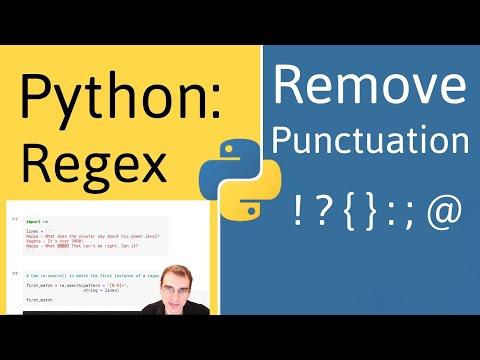
Found 47 images related to removing punctuation from string python theme

.png)



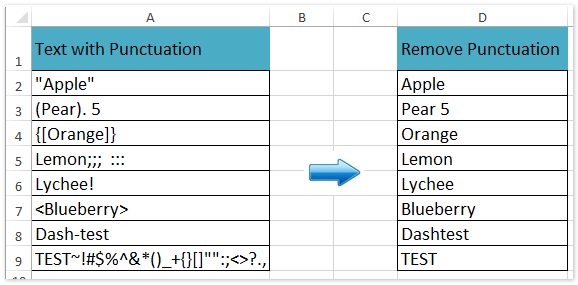











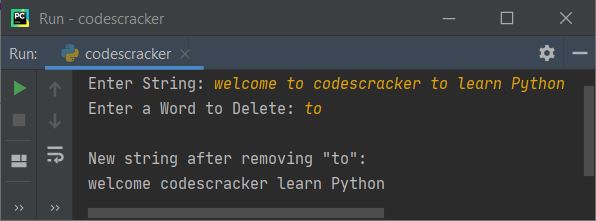









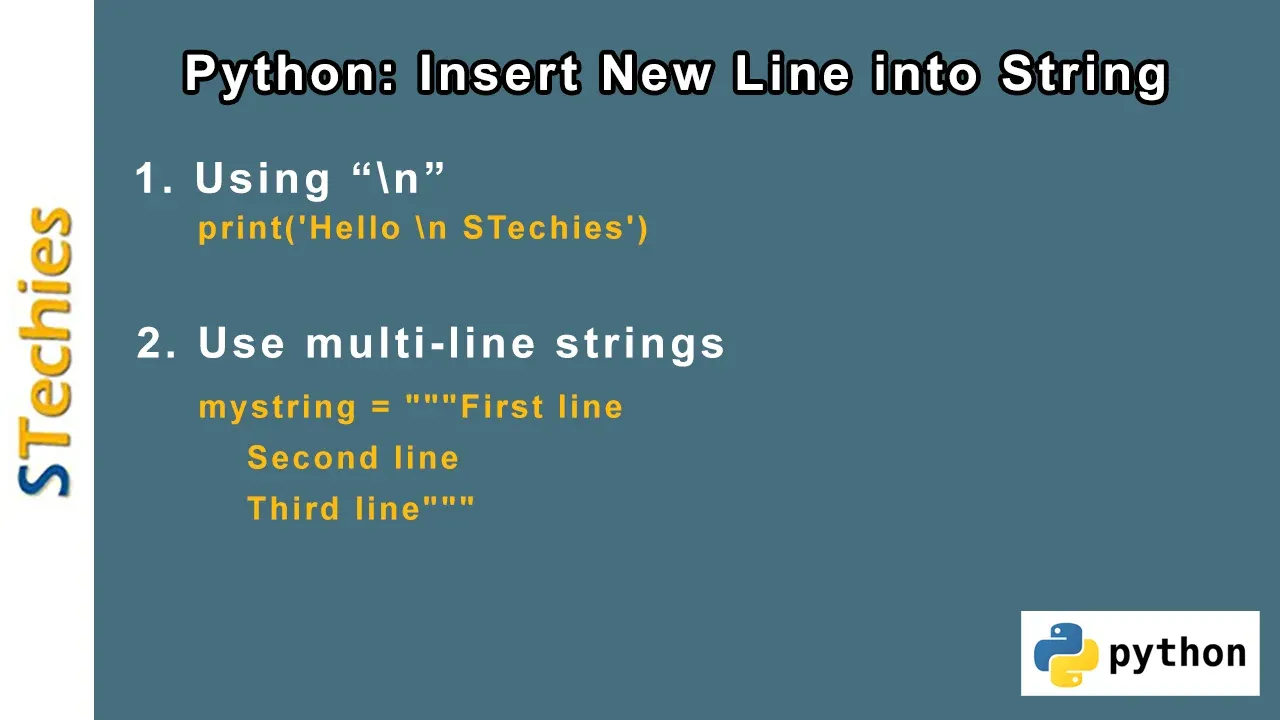


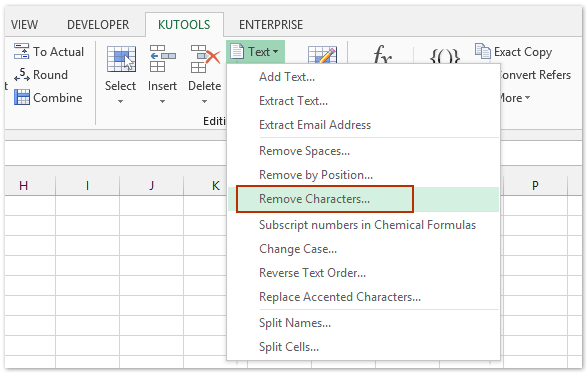


Article link: removing punctuation from string python.
Learn more about the topic removing punctuation from string python.
- Remove Punctuation from String using Python (4 Best Methods)
- Python: Remove Punctuation from a String (3 Different Ways!)
- Python | Remove punctuation from string – GeeksforGeeks
- Best way to strip punctuation from a string – Stack Overflow
- Python Program to Remove Punctuation From a String – Javatpoint
- Python Program to Remove Punctuations From a String
- Python Program to Remove Punctuations From a String
- Python: Remove Punctuation From String, 4 Ways
- Remove Punctuation from String Python – Scaler Topics
- Remove punctuation from a List of strings in Python – bobbyhadz
- How to Remove Punctuation from Python String? – Shiksha.com
- Remove Punctuation Python – STechies
See more: https://nhanvietluanvan.com/luat-hoc